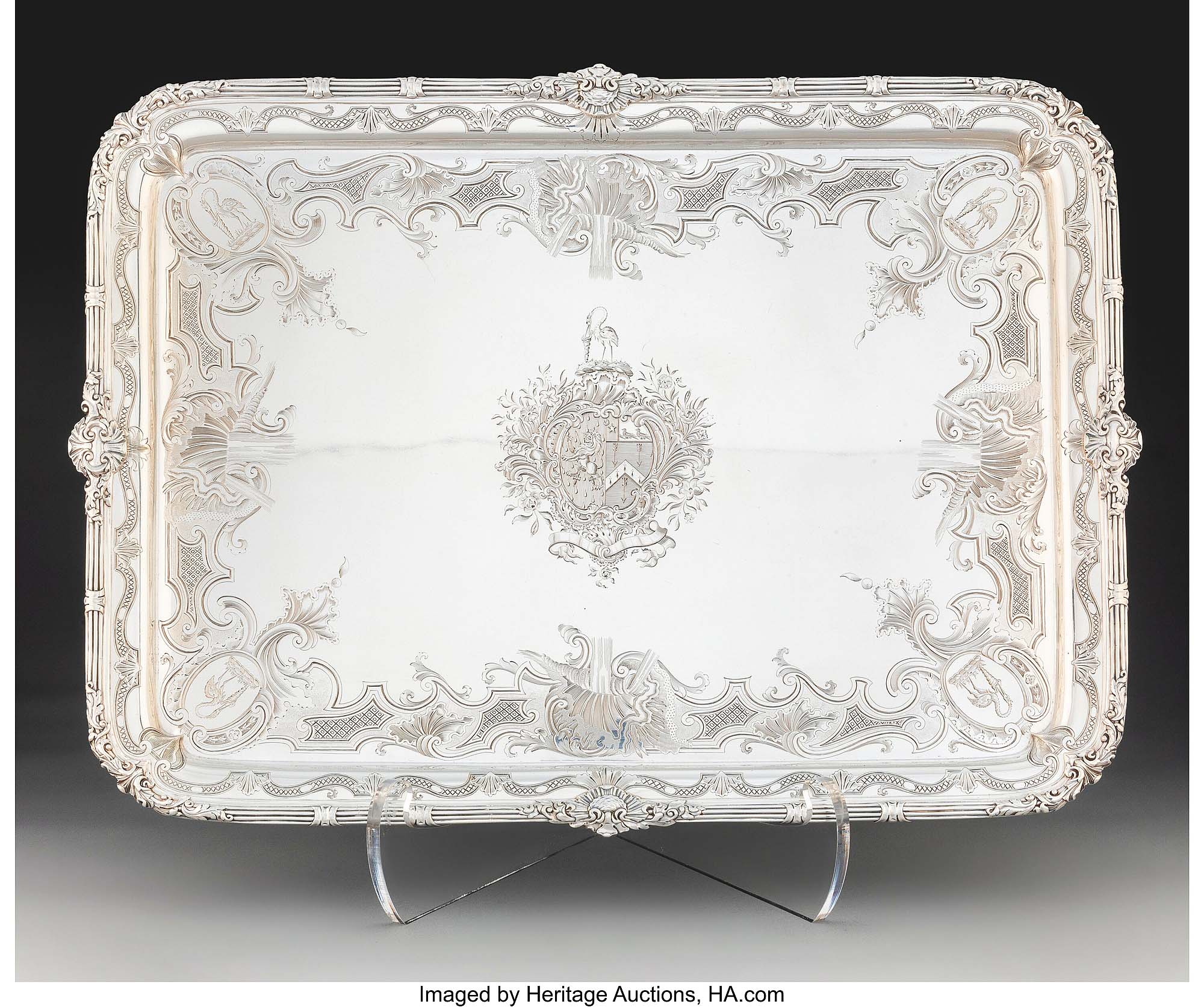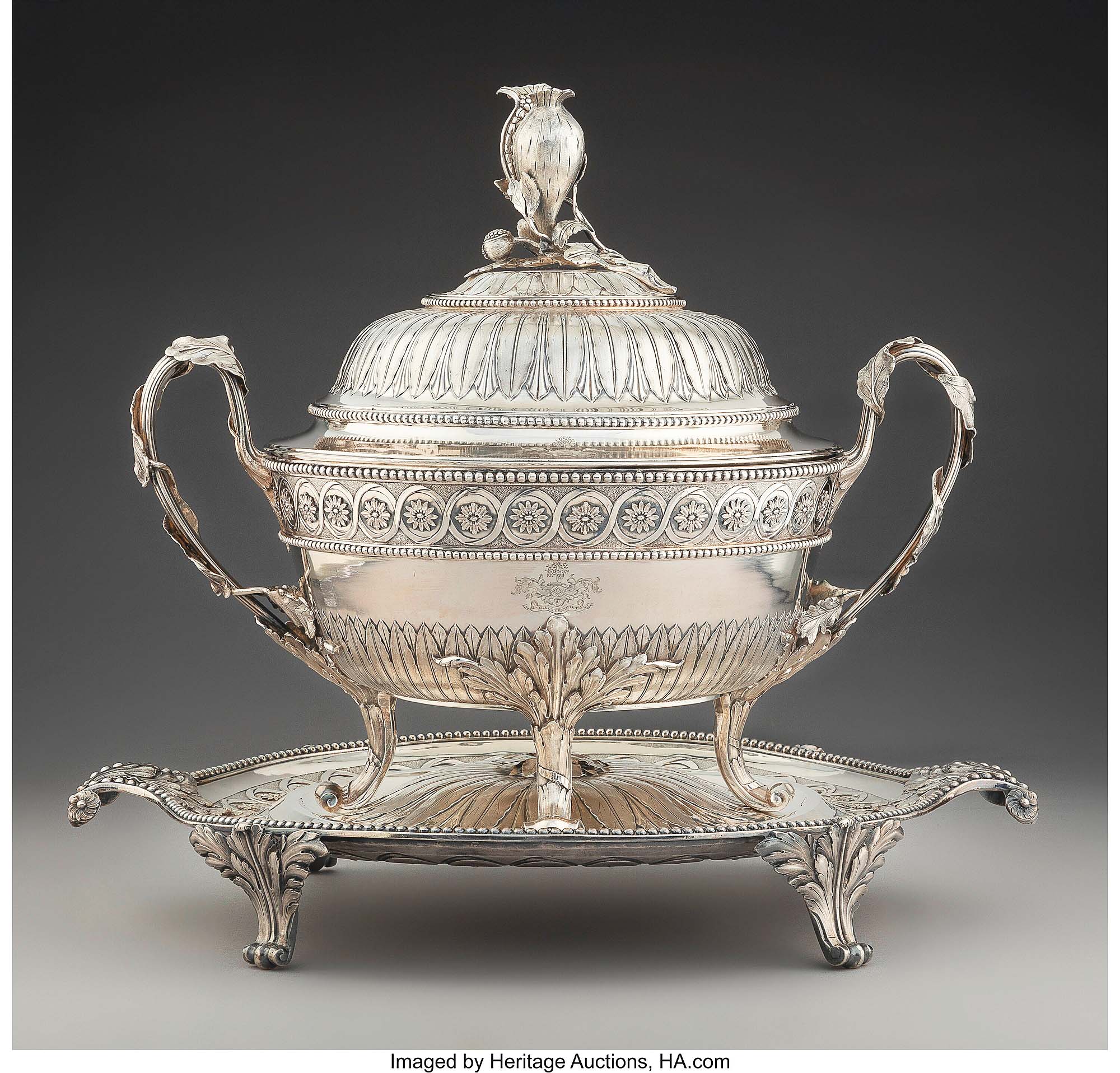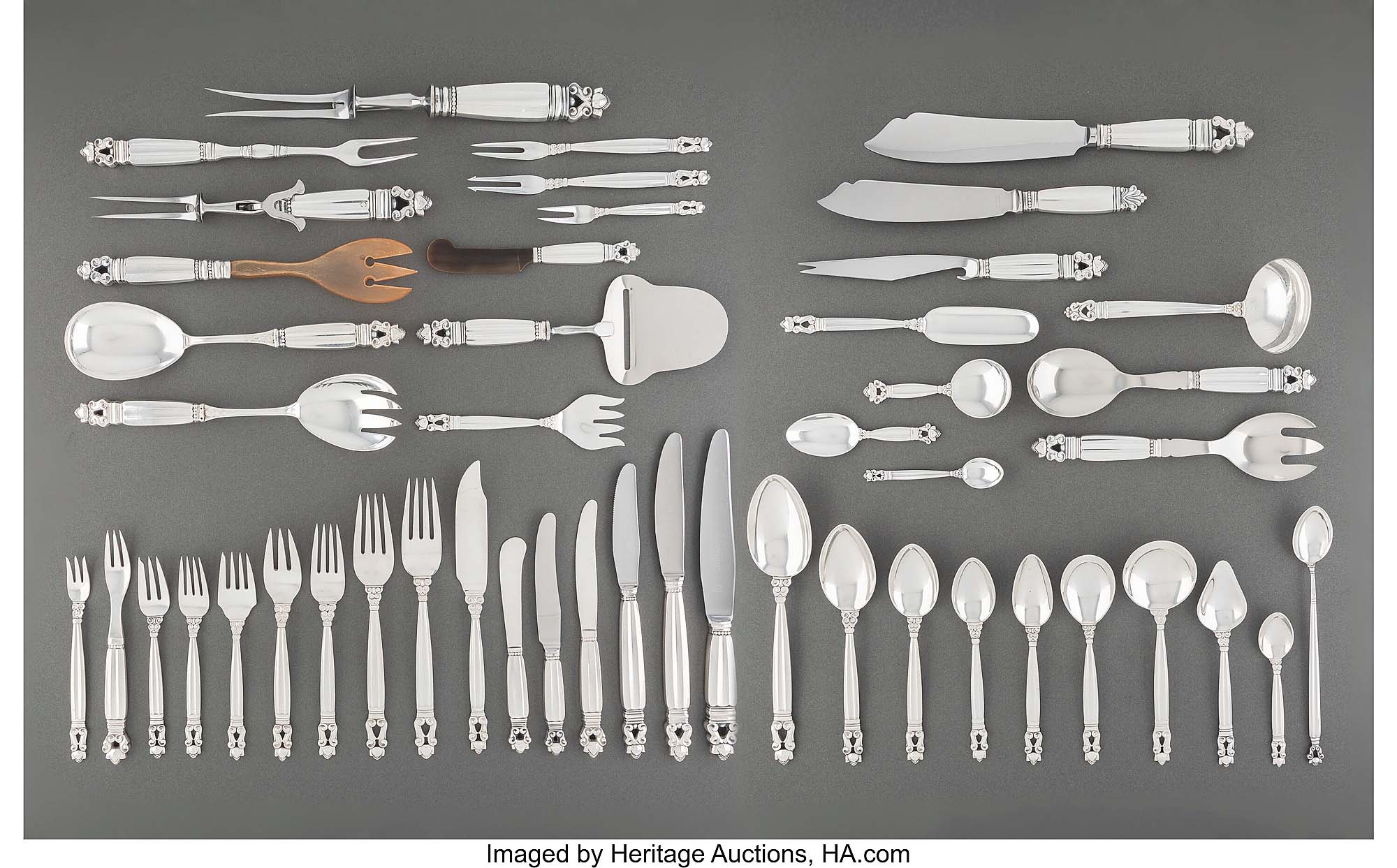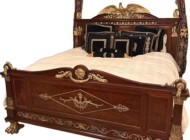
These Paul Storr silver wine coolers, London, 1817, 8¾ by 11¼ inches, earned the sale’s highest price of $87,500.
Review by Carly Timpson
DALLAS — The November 12 auction of Fine Silver & Objects of Vertu, conducted by Heritage Auctions, featured 377 lots and realized $1,447,062. Spanning centuries and styles of craftmanship, the sale included objects by makers such as Peter Bentzon, Tiffany & Company, Georg Jensen and more.
“Six hundred fifty-six bidders from around the world vied for the 377 lots, with only two lots passing. The sale was an undeniable success, achieving a 99 percent sell-through rate,” shared Karen Rigdon, Heritage’s vice president of fine silver & decorative arts. “The bidding pool represented collectors, institutions and dealers alike. Since Heritage’s first standalone Fine Silver auction in 2008, our reputation has continued to grow, drawing an ever-expanding global audience.”
Earning the highest price of the day was a pair of Paul Storr silver wine coolers from 1817, each of fluted baluster form bearing the coat of arms of Charles Chetwynd-Talbot, Second Earl Talbot, Knight of the Garter. The wine coolers had detachable rims with shell and scroll boarders as well as removable silver liners, all with engraved crown and lion crests. Measuring 8¾ inches tall by 11¼ inches from handle to handle each, the pair left the property of a Hancock Park, Los Angeles, collector and found a buyer for $87,500.

In the form of a mythical beast, this Hoaching (Canton, China) covered ewer, circa 1850-90, 20¼ by 9 by 7 inches, achieved $42,500.
An unexpected high result was achieved by a Hoaching figural ewer. With an estimate of just $12/18,000, the mythical beast-form vessel, made circa 1850-90 in Canton, China (now known as Guangzhou), rose to $42,500. The piece was originally retailed by Yok Sang, possibly of Shanghai, and bore marks for that seller, the maker and one other unidentified character mark. Rigdon spoke of the piece’s success, stating, “Interest in the Hoaching ewer was staggering. While we consistently see spirited bidding on Asian silver, this particular piece far exceeded our expectations. It’s worth noting that the smaller Asian silver lots also achieved impressive results, reinforcing the strength of interest in this collecting area.”
She indicated three Japanese lots that impressed her: a 9⅜-inch-long silver figure of a minogame, or mythical old turtle with long strands of algae growing from its shell ($6,875); a silver and mixed metal tanuki table ornament from the Twentieth Century with an artist’s mark ($5,500); and a silver and mixed metal woven basket-form box with carp, crab and crawfish on its cover and a brass frog applied mid-body ($5,500).
The sale’s third-highest price was earned by a four-piece silver and mixed metal tea set by Tiffany & Company. Each piece’s hand-hammered silver surface was engraved with seagrass details and featured applied sea life — fish, frogs, turtles, crabs, scallops, insects — in copper and bronze. Cataloged as “a triumph of Aesthetic-era innovation” that “presents beautifully,” the tea set came from a Richmond, Va., collection and sold for $40,000.
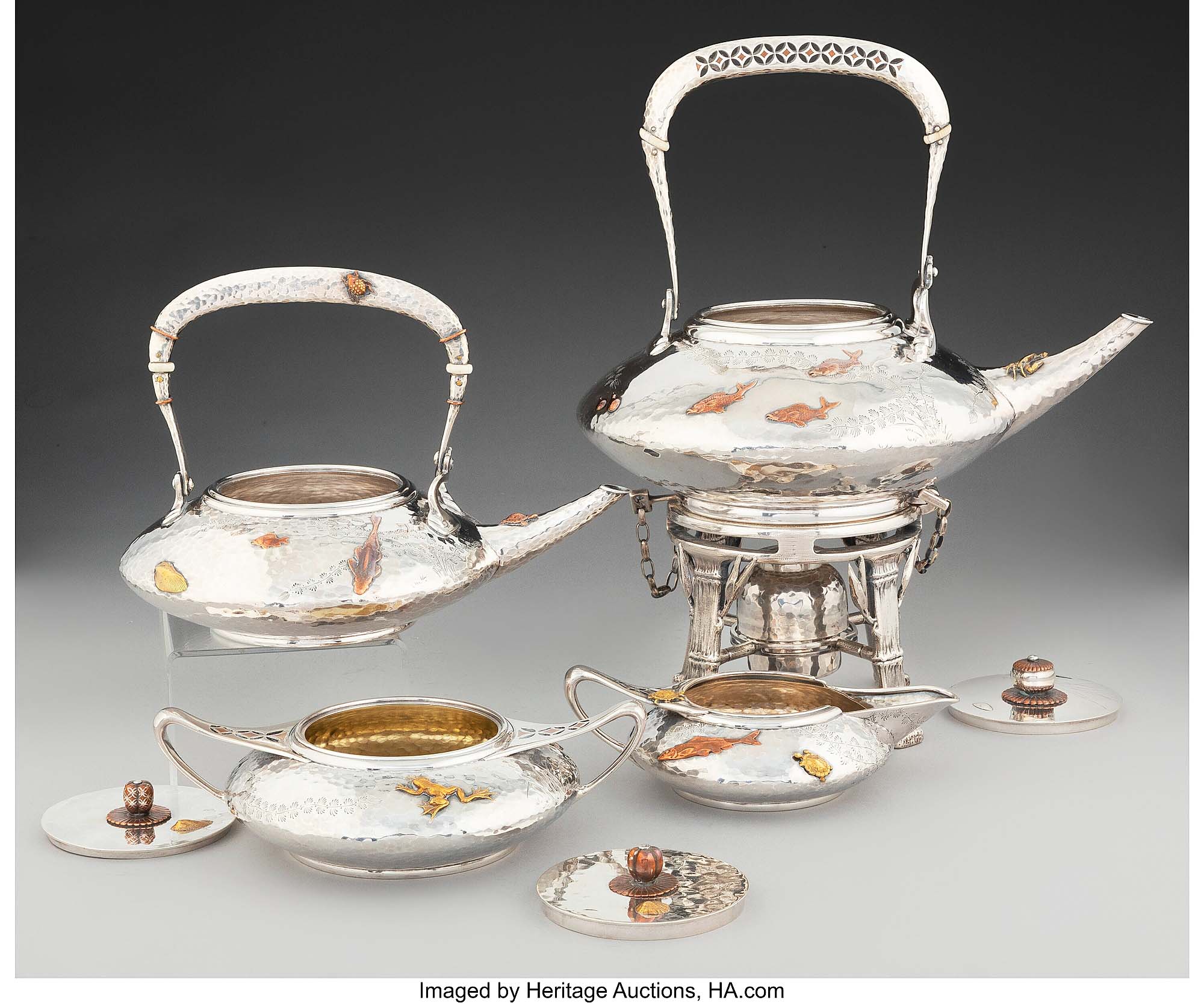
This four-piece Tiffany & Company, New York, circa 1880, silver and mixed metal tea set with depictions of sea life swam to $40,000.
An 1815 sterling silver tray by Paul Storr that bore a central engraving of the arms of the Walter family impaling another, likely indicating it was commissioned to commemorate a marriage, came from the same Hancock Park collection as the sale’s top lot and more than doubled its high estimate to achieve $32,500.
A $32,500 result was also earned by a George Heming and William Chawner I covered tureen on stand. Made in London in 1779, the tureen had the Waller family coat of arms and motto, “Hic fructus virtutis,” which translates to “This is the fruit of virtue.”
“I’m also delighted to share that a prominent American institution acquired the Peter Bentzon pap bowl, though we’re not yet at liberty to disclose which one,” added Rigdon. This pap bowl, made circa 1810-20, likely in St Croix, was boldly marked “P. Bentzon” to its underside. Bentzon, born circa 1783, was the earliest American silversmith of African descent whose work is identifiable by a personal hallmark, and he moved between the Caribbean and Philadelphia several times throughout his career. The institutional buyer acquired this piece of Black history for $30,000 — doubling its high estimate.

Made by early Black silversmith Peter Bentzon (circa 1783-after 1850), this pap bowl, 1½ by 4¾ by 2⅝ inches, sold to an American institution for $30,000.
Flatware services were led at $30,000 by a 510-piece Georg Jensen service for 12 in the Acorn pattern, designed by Johan Rohde in 1915. Other Georg Jensen pieces included a pair of candelabra made in collaboration with Wendel AS, circa 1945-51. Also designed by Rohde, the 17¼-inch-tall pair brought $19,375.
There were about 30 lots of jewelry in the auction, topped at $17,500 by a three-piece suite by William Spratling. Made with 18K gold and wood, the necklace and earrings were crafted in the mid Twentieth Century in Taxco, Mexico, and came from the collection of Billy Williams (Carpinteria, Calif). With an estimate of $3/5,000, the set did much better because “Rarity drove the bidding,” Rigdon remarked. “This gold suite is a remarkable departure from Spratling’s more familiar silver designs and reflects his evolution after returning from Alaska, when he began drawing inspiration from both pre-Columbian and early Alaskan motifs.”
Prices quoted include the buyer’s premium as reported by the auction house. For information, www.ha.com or 877-437-4824.

